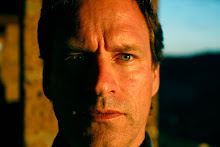
The French bureaucracy foiled my depature for Paris, but I made the most of the unexpected delay. I took the train to Milwaukee and caught a ride with my commuting friend John Woerthenheimer back toward Minneapolis. We met his partner Jim Buchta at their farm in Wisconsin, and spend two days hunting morels. As symbols of the heart-crushing ephemera of spring, the Japanese have cherry blossoms; Midwesterners have these most succulent mushrooms. We found dozens sprouting through the leaves at the roots of dead elms, and ate them fried in butter and ladled over broasted halibut.





